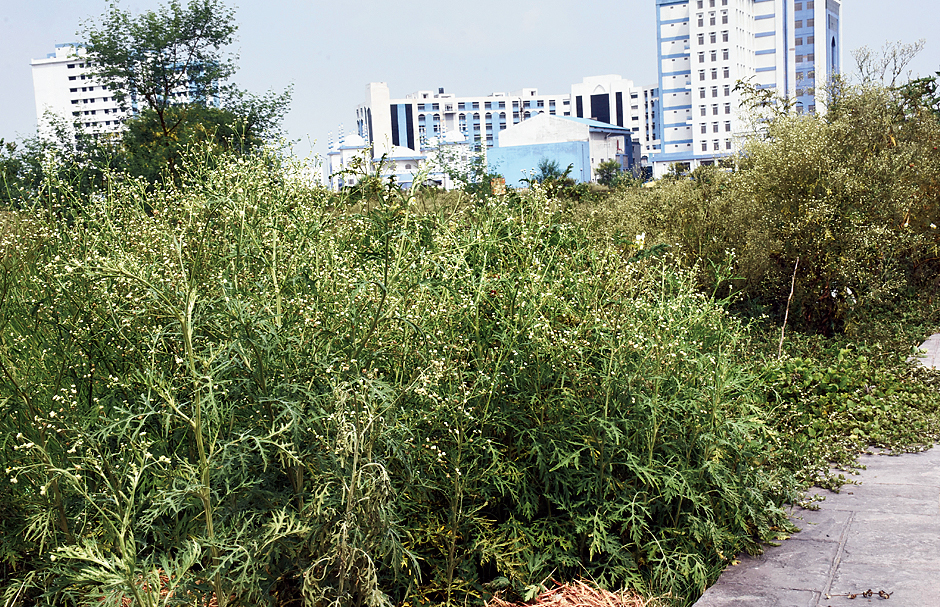The empty plots of New Town are getting encroached. Not by outsiders but by certain bushes growing at break-neck speed, harming the plants and people living around it: parthenium.
“For my morning walk, I travel along the plot earmarked for the new high court,” says Archan Patranabish who lives in Swatarthi co-operative society near the Owl Junction. “Till a few months ago, there was a pretty hasnuhana plant there, from which I even brought a branch home to plant in my own house. But now that flowering plant has got buried under partheniums. They spread even faster during monsoon so I’m afraid about the coming weeks.”
Others are worried about how parthenium causes breathing and skin problems. “The street sides in our area have got parthenium,” says Shyamapada Gupta, a senior citizen of BF Block who suffers from a lung problem known as chronic obstructive pulmonary disease (COPD). A few months ago, he was on oxygen and is currently using inhalers.
For his morning and evening walks Gupta heads to Swapno Bhor senior citizens park, that is free from the dreaded plant, “but I cannot avoid exposure when walking to the bank attached to the Pride Hotel building,” he says. “That stretch has a lot of partheniums.”

Partheniums grow in wild next to Aliah University. (Mayukh Sengupta)
Indeed, the empty plots are quite infested by the plant. The stretch from opposite the high court plot to Alia University and beyond has untidy bushes of parthenium. The footpaths right outside the university or offices like Eco Space are clean but the rest grows wild. The stretch from New Town police station to Kolkata Gate is so badly infested that some of the cars seized and parked next to the thana are almost hidden by partheniums.
“What’s worse, the pollen flies into our homes through windows. It can cause bronchitis,” says Sithi Kana Ghatak, a homeopathy doctor who lives in CD Block, near Novotel. “Things had got so bad last year that I had complained to New Town Kolkata Development Authority (NKDA) after the Pujas. They promptly removed the plants but they’ve grown back. It was the same story in Salt Lake when we lived there in the 1990s.”
S.K. Maiti, patron of Bidhannagar Horticultural Society, remembers how Salt Lake was overrun by parthenium till some years ago. “The plant propagates very easily as its seeds, which are in the flower, get carried by the wind. They germinate wherever they land,” says Maiti. “If partheniums have reduced in Salt Lake now it is only because a lot of buildings have come up and denied parthenium seeds the soil and space to settle.”
Removing partheniums is a challenge too. “It is not enough to uproot them. One has to burn them lest the seeds of the uprooted plants fly away and germinate again,” says Maiti. “Even the workers uprooting them must be careful and wear gloves.”
Debashis Sen, chairman of New NKDA, says they are planning a long-term solution to the parthenium problem. “While NKDA removes the plants whenever we are informed by residents, we cannot indefinitely go on using tax payers’ money for this.”
Most places where the plant grows wild are in empty plots so NKDA now plans to involve the plot owners in the parthenium removal process. “Whenever we find out about parthenium infestation in an empty plot, the land owner will be contacted. He will either have to remove the plants himself or pay NKDA to do the same.”











